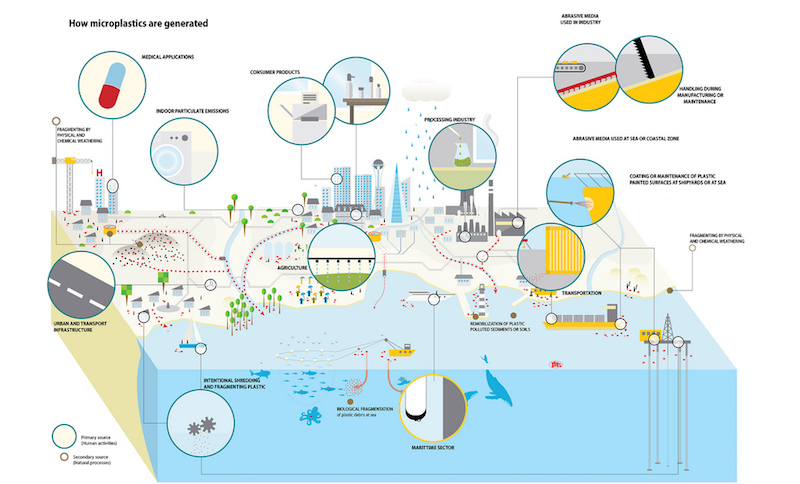
The majestic and mysterious deep blue water of Lake Tahoe, CA, is well known for its spectacular beauty. However, an extremely high concentration of microplastics is a major concern and growing problem to the lake’s clarity and purity. Microplastics are tiny (<0.2 inches) plastic particles and microfibers from clothing, cosmetics, single-use water bottles, and plastics, and a staggering amount of other everyday sources present in oceans, lakes, and watersheds globally. These minuscule particles, consisting commonly of polyester, polypropylene, and polyethylene, all of which do not break down into harmless molecules, cause disruptive and harmful effects on the surrounding ecosystem and wildlife.

Research out of the University of Nevada, Reno, led by postdoctoral scholar Veronica Nava from the University of Milano-Bicocca in Italy, in conjunction with colleagues worldwide, discovered two types of lakes and reservoirs that are especially vulnerable to microplastic pollution. The first: lakes and reservoirs that are located in densely populated and urbanized areas (cities). The second type is large lakes and reservoirs located at high elevations that hold water for longer periods of time and experience substantial levels of human influence (Lake Tahoe). Microplastics were even found in more desolate and environmentally protected areas, suggesting that they can travel and be deposited through the atmosphere due to evaporation and precipitation.

Samples were collected from 38 different freshwater lakes and reservoirs in 23 different countries across six continents, all, unfortunately, showing the presence of microplastics. Three lakes, Lake Lugano and Maggiore on the borders of Italy and Switzerland and Lake Tahoe showed higher concentrations of microplastics than what has been observed in the ocean “garbage patches.” Both European lakes are located in densely populated areas, with wastewater inlets and egregious littering directly contributing to the high levels of microplastics present.
However, Lake Tahoe is supposed to be different. From exporting wastewater for the last 50 years to numerous different environmental organizations involved in attempting to preserve and protect the lake’s natural beauty, the sustained efforts still only appear to put a minor dent in the increasing damage. Although it is not perfectly clear how exactly these microplastics are making their way into Lake Tahoe, Nava plans to find an answer to that question and many more.
“We still believe that the concentration of plastics is linked to the human presence, whether from leaving trash on the beach or other small ways where plastic can end up in the water.”
These findings come just weeks after the release of the new Tahoe Destination Stewardship Plan and following over 8,000 pounds of trash that were picked up after Independence Day. Everyone who spends time around Lake Tahoe is asked to practice leave no trace, as local residents and regional planning agencies and organizations keep at their attempts to combat these repeating issues that continue to worsen.
